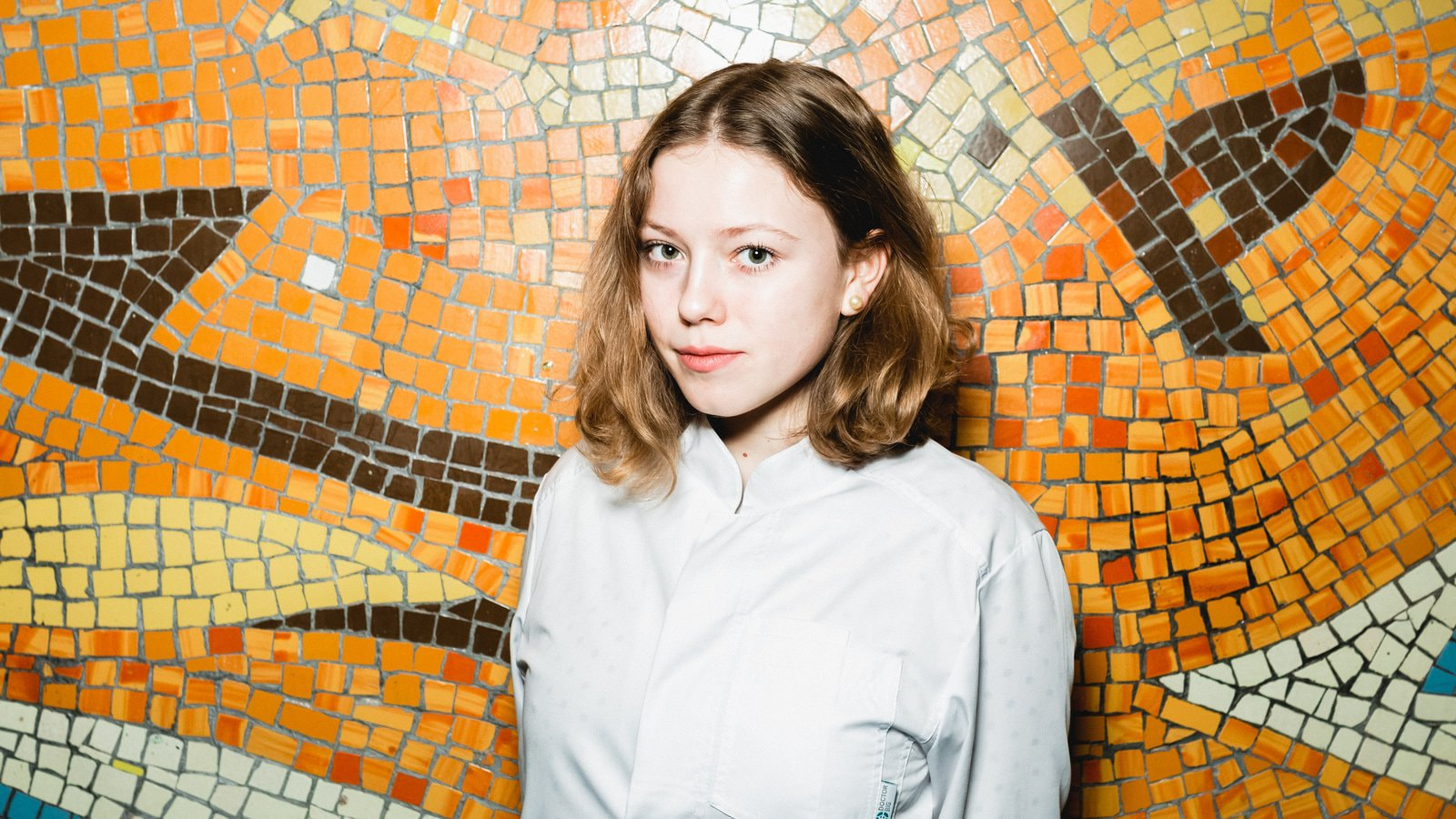Elizaveta Voronova’s Diary
Elizaveta Voronova
I am a third-year student of the Social Sciences Faculty at the Sociology Department at National Research Center—Higher School of Economics. I also attend classes of the minor program Contemporary Art: An Introduction to Art Theory and Museum and Exhibition Practices developed by HSE together with Garage. I teach an elective course on contemporary art at the HSE Lyceum. My interests include institutionalization of museum spaces and, at the same time, the problem of intercommunication between modern-day visitor and items on display. In the end of 2019 and beginning of 2020, I was chief mediator at the 10th Art Experiment at Garage.
Logistics
During the first shift, I managed to fully immerse myself in the space of Art Experiment. I’d like to underline how coherent the route was in terms of both the logic and convenience of movement and semantic completeness. The entrance, or “fine-tuning”, zone properly inscribed in the exposition allowing a sort of “shake-up” of the visitors and encourage them to talk. For me this area became a place for open discussions where “wrong” thoughts and answers do not exist, where anyone can share their observations without fear of looking ridiculous or stupid.
The architecture of Art Experiment is also noteworthy, with its erected construction not only referencing the show’s main theme, but also transforming the perception of space: after a cold concrete environment the visitor entered an ethereal and cozy space.
Museum visitors oftentimes get lost in front of an artwork, feel scared to start a dialogue. In my opinion, Art Experiment has helped people to experience the process of an open discussion which they probably never ever had before. All this made me think about how to create comfort zones that would instigate visitors to reflect and discuss in the space of a museum as an institution with its norms, rules, and sanctions.
Content
Olfaction as the key theme of this year’s edition of Art Experiment seemed unusual and beguiling to me. I believe our exhibition successfully conveyed the ambiguous role of smell in human life—by skillfully combining educational, aesthetic, and game elements. Rather than being just “entertainment for the sake of entertainment”, the game section implied interactivity inextricably tied with reflection upon what was happening. Moreover, the implementation of meditative practices in the show was a bold and extraordinary decision, in my opinion, allowing to push the boundaries of exhibiting and arranging items of art within the museum space. We can say that Art Experiment’s final section had some therapeutic effect on visitors.
As I had no mediator’s experience whatsoever prior to this year’s Art Experiment, everything seemed novel and unknown to me. My first shift fell at the end of December, when, along with two other female colleagues, I had to accompany an inclusive group of visitors. Since it demanded a certain level of qualification, I failed to provide fully-fledged mediation for them. Nevertheless, it was a valuable experience of communication with people who understand the specificity of interacting with visitors with learning disability.
My first, let’s say, fully competent mediation took place in early January. I tried to not impose my point of view on the visitor in the first instance, allowing them to do their own analysis of what they saw. From time to time, I threw in some facts, when I felt that the group was not ready to discuss their thoughts yet. In most cases, right after getting into the “fine-tuning” zone, people started answering questions without any signs of embarrassment, developed their reasoning and found co-thinkers among the public.
A rather complicated nuance of mediation is, in my opinion, finding and maintaining a balance between communication with the group (of 14 people) in general—and that with its most active members. Certain people would sometimes prefer to watch others engage in a dialogue rather than join it themselves. When it happened, I tried to maintain eye contact with visitors, thus maintaining somewhat of a nonverbal dialogue. These cases led me to the idea that, perhaps, smaller groups of around 7–8 persons would be better for comprehensive mediation wherein all visitors are engaged.
I have noticed that, speaking about some personal issues, such as favorite perfumes, visitors eagerly shared their thoughts. No embarrassment, no tension in the dialogue. Children also contacted more feely, they approached me and asked questions without any confusion.
I was surprised to hear one of my groups’ opinion regarding an artwork in the entrance zone (a painting by Yuri Kuper) which some of the participants associated with happiness, while the majority of others named yearning, despondency, and sadness among the possible associations. It made me look at the whole picture from an entirely new perspective and reflect on the visitors’ subjective perception of artworks.
